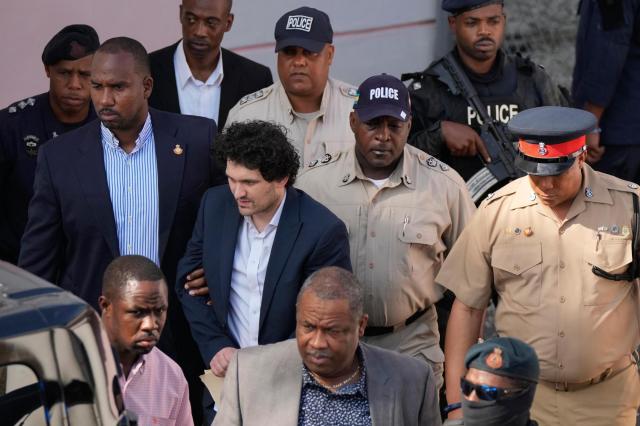
By SALLEE ANN HARRISON | Associated Press
Sam Bankman-Fried went from cryptocurrency golden boy to the face of the industry’s collapse. The founder and former CEO of the massive cryptocurrency exchange FTX was sentenced to 25 years in prison Thursday after being convicted of fraud for stealing at least $10 billion from customers and investors. The collapse of one of the largest crypto exchanges in the world shook the digital currency world and sent prices plunging.
Here is a timeline of how it happened.
2022
Nov. 2: Coindesk reports Alameda Reseach, Bankman-Fried’s cryptocurrency trading firm, holds a large amount of FTT, a token issued by FTX, suggesting the finances of the two are intertwined and Alameda faces a cash crunch. The report spooks participants in the crypto market.
Nov. 6: Rival cryptocurrency exchange Binance announces that the firm plans to sell all its holdings in FTT. The price of FTT tanks.
Nov. 8: Binance CEO Changpeng Zhao said his company had signed a letter of intent to buy FTX because the smaller exchange was experiencing a “significant liquidity crunch.” That deal would be contingent, however, on a look at the books at FTX. The price for bitcoin tumbles 13%.
Nov. 9: Cryptocurrency prices plunge and after getting a closer look at the finances of FTX, Binance retreated and said there would be no acquisition. “In the beginning, our hope was to be able to support FTX’s customers to provide liquidity, but the issues are beyond our control or ability to help,” Binance said in a statement. Bitcoin prices drop another 14%.
Nov. 10: Cryptocurrency lender BlockFi announced it is “not able to do business as usual” and was pausing client withdrawals as a result of FTX’s implosion.
Nov. 11: FTX files for Chapter 11 and Bankman-Fried resigns. John Ray III, a long-time bankruptcy litigator who is best known for having to clean up the mess made after the collapse of Enron, is named the new CEO.
In its bankruptcy filing, FTX listed more than 130 affiliated companies around the globe. The company valued its assets between $10 billion to $50 billion, with a similar estimate for its liabilities. Bitcoin falls 10%.
Nov. 17: Ray gives a damning description of FTX’s operations under Bankman-Fried, from a lack of security controls to business funds being used to buy employees homes and luxuries.
Nov. 30: As part of a media blitz, Bankman-Fried tells New York Time’s Andrew Ross-Sorkin, “Look, I screwed up,” and didn’t knowingly misuse clients’ funds.
Dec. 12: Bankman-Fried is arrested in the Bahamas, where FTX is headquartered.
Dec. 13: The U.S. government charges Bankman-Fried with a host of financial crimes, alleging he intentionally deceived customers and investors to enrich himself and others, while playing a central role in the company’s multibillion-dollar collapse.
Federal prosecutors said Bankman-Fried devised “a scheme and artifice to defraud” FTX’s customers and investors beginning the year it was founded. He illegally diverted their money to cover expenses, debts and risky trades at Alameda Research, and to make lavish real estate purchases and large political donations, prosecutors said in a 13-page indictment.
Dec. 22: Bankman-Fried’s parents agreed to sign a $250 million bond and keep him at their California home while he awaits trial.
2023
August 11: Judge revoked Bankman-Fried’s bail and sent him to jail after concluding he had repeatedly tried to influence witnesses against him.
Oct. 3: Jury selection began for the trial.
Oct. 27: Bankman-Fried took the stand in his trial. He again acknowledged failures but denied defrauding anyone.
Nov. 3: Bankman-Fried is convicted of fraud for stealing at least $10 billion from customers and investors.
2024
March 28: Bankman-Fried is sentenced to 25 years in prison. Bitcoin has roared back from a massive sell-off during the scandal. Prices are up nearly 70%.

